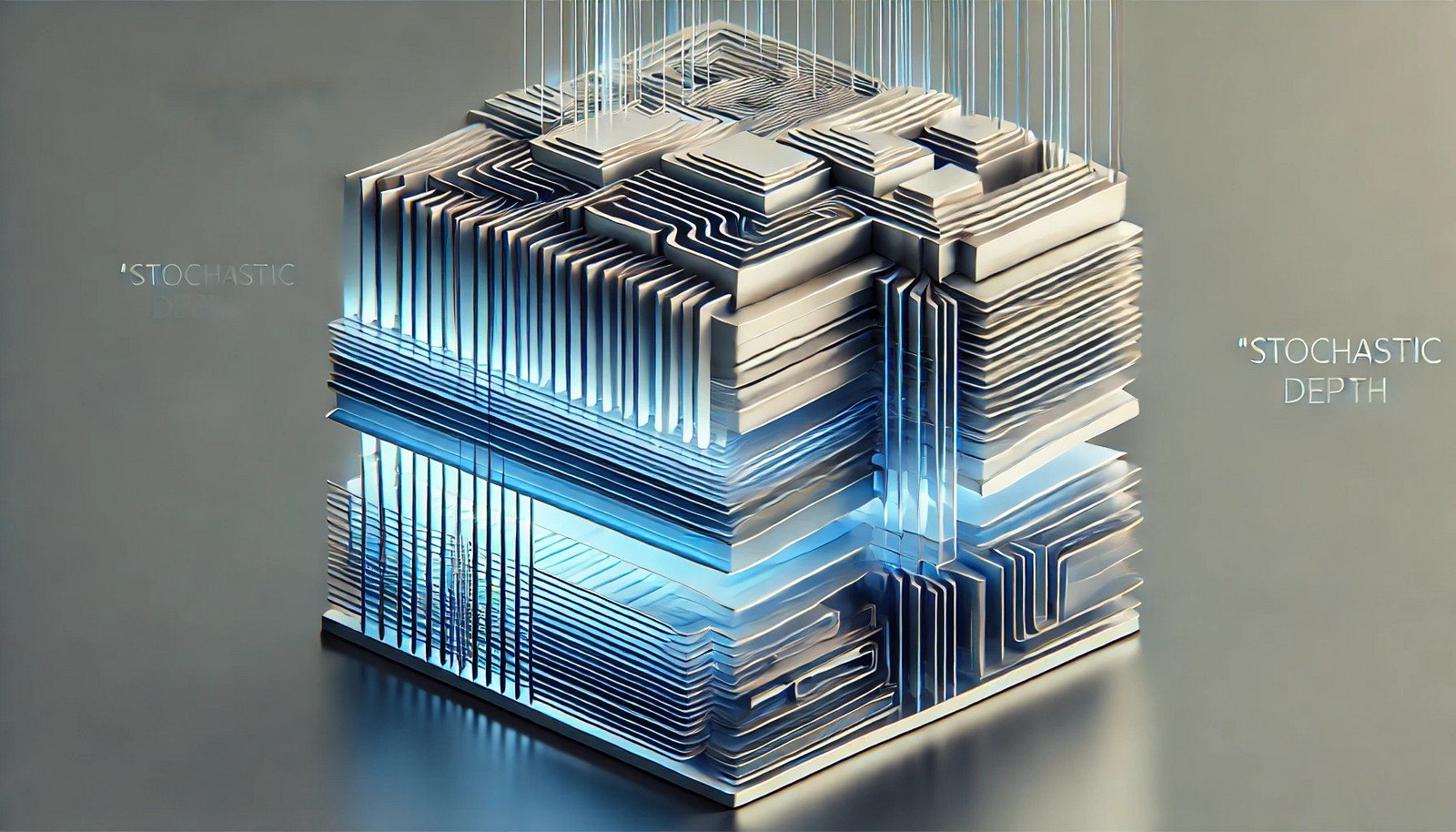Stochastic Depth

Quick Navigation:
- Stochastic Depth Definition
- Stochastic Depth Explained Easy
- Stochastic Depth Origin
- Stochastic Depth Etymology
- Stochastic Depth Usage Trends
- Stochastic Depth Usage
- Stochastic Depth Examples in Context
- Stochastic Depth FAQ
- Stochastic Depth Related Words
Stochastic Depth Definition
Stochastic Depth is a deep learning technique designed to improve the efficiency and performance of very deep neural networks. During training, some layers are randomly skipped based on a probability, allowing the model to maintain considerable depth without being fully active at every step. This reduces training time and combats overfitting, a common issue in deep models. By using stochastic depth, models like ResNet achieve high accuracy without increasing computational costs excessively.
Stochastic Depth Explained Easy
Think of a long relay race where some teammates occasionally skip their turn, but the race continues smoothly. Stochastic Depth in AI works similarly—it lets a neural network skip some steps during training, making the "running" easier without losing out on learning. It helps the computer learn faster without getting "tired.".
Stochastic Depth Origin
Stochastic Depth emerged as a response to the challenges of training very deep networks, which often require enormous computational resources and face issues like overfitting. This technique was first introduced as part of the Residual Networks (ResNet) architecture in deep learning research, where it demonstrated substantial performance improvements.
Stochastic Depth Etymology
The term "stochastic" comes from the field of probability and statistics, implying randomness, while "depth" refers to the number of layers or stages in a neural network.
Stochastic Depth Usage Trends
Stochastic Depth has seen increased usage in cutting-edge deep learning architectures since its introduction. It has grown in popularity, especially in image recognition and natural language processing, due to its effectiveness in reducing overfitting and enabling efficient training. By offering a balanced way to optimize neural network performance, stochastic depth has been adopted in various models beyond ResNet.
Stochastic Depth Usage
- Formal/Technical Tagging:
- Machine Learning
- Deep Learning
- Neural Network Optimization - Typical Collocations:
- "Stochastic depth in neural networks"
- "layer skipping technique"
- "improving network efficiency"
Stochastic Depth Examples in Context
- By using stochastic depth, the neural network could train faster, avoiding overfitting issues often found in deep architectures.
- Applying stochastic depth allowed the ResNet model to achieve high accuracy without excessive training time.
- Researchers are integrating stochastic depth into NLP models to enhance performance and computational efficiency.
Stochastic Depth FAQ
- What is stochastic depth?
Stochastic Depth is a method in neural networks that skips layers randomly during training, improving efficiency and reducing overfitting. - Why is stochastic depth useful?
It helps deep networks maintain performance while avoiding high computational costs and overfitting. - How does stochastic depth work in practice?
Layers are randomly selected to be skipped during each training pass, allowing the model to learn with reduced computations. - Which models use stochastic depth?
It is commonly used in models like ResNet and other advanced deep learning architectures. - What’s the difference between dropout and stochastic depth?
Dropout randomly ignores neurons within a layer, while stochastic depth skips entire layers. - Is stochastic depth only for image recognition models?
No, it’s also used in NLP and other domains requiring deep networks. - Does stochastic depth improve training speed?
Yes, by skipping layers, it reduces computational time during training. - Is stochastic depth effective for all neural networks?
It’s mainly beneficial for very deep networks where overfitting and training time are concerns. - Can stochastic depth be applied during inference?
Typically, no. During inference, the full network is often used to ensure maximum accuracy. - How does stochastic depth affect model accuracy?
By preventing overfitting, it often improves accuracy, especially on complex tasks.
Stochastic Depth Related Words
- Categories/Topics:
- Neural Network Architecture
- Deep Learning Techniques
- Overfitting Solutions
Did you know?
Stochastic depth was pioneered to help deep models achieve impressive results with fewer resources. By skipping certain layers during training, the ResNet model achieved world-record performance on image classification tasks, reshaping how AI models are optimized for both speed and accuracy.
PicDictionary.com is an online dictionary in pictures. If you have questions or suggestions, please reach out to us on WhatsApp or Twitter.Authors | Arjun Vishnu | @ArjunAndVishnu

I am Vishnu. I like AI, Linux, Single Board Computers, and Cloud Computing. I create the web & video content, and I also write for popular websites.
My younger brother, Arjun handles image & video editing. Together, we run a YouTube Channel that's focused on reviewing gadgets and explaining technology.



Comments powered by CComment